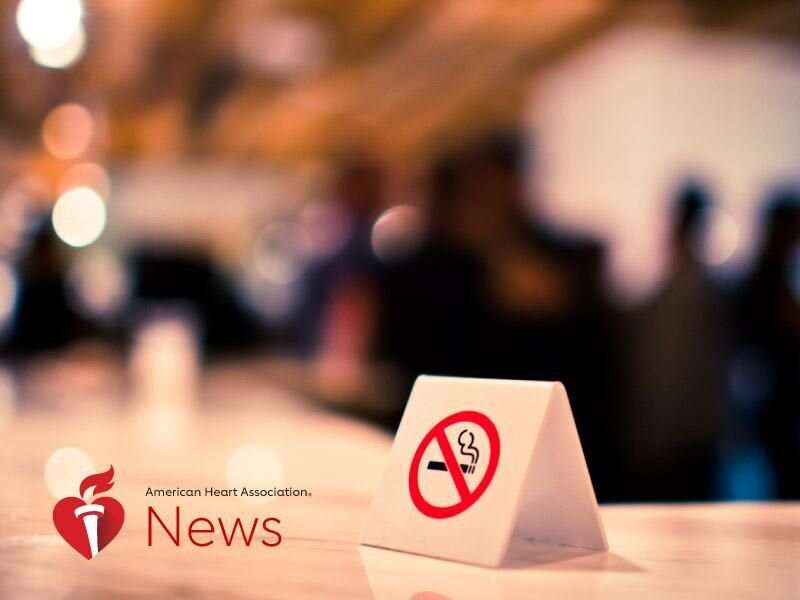
Harmful secondhand tobacco smoke remains more widespread than most people think, experts say, and exposure is particularly high for children, Black adults and people living below the poverty line.
One of the biggest hurdles is smokers often underestimate the levels of exposure and the effects on nonsmokers’ lungs, hearts and brains.
“There’s denial among the smokers that they don’t smoke around children, they don’t smoke in the house, they don’t smoke in the car,” said Dr. Geetha Raghuveer, a pediatric cardiologist at Children’s Mercy Hospital in Kansas City, Missouri. “But that may not be something they can execute all the time.”
She said the “intent” might be there to avoid smoking around others, but the reality often differs greatly—and “with the pandemic, at this point in time, people may have been indoors more.”
According to the Centers for Disease Control and Prevention, an estimated 58 million people in the U.S. were exposed to secondhand smoke as of 2014, the latest year for which data is available for both children and adults.
More recently, a CDC report in middle school and high school students said about 1 in 4—or nearly 7 million—reported breathing secondhand smoke in their homes in 2019. That exposure came from the estimated 14% of U.S. adults—34.1 million—who smoked cigarettes as of 2019. Millions more used cigars, pipes and other burning tobacco products.
The U.S. surgeon general has said there is no risk-free level of secondhand smoke, which contains hundreds of toxins such as nicotine, ammonia and carbon monoxide. Inhaling the smoke can contribute to a range of serious health conditions such as asthma, unhealthy blood vessels, hypertension and premature cardiovascular disease or death. According to the CDC, nonsmokers who are exposed to secondhand smoke at home or work have a 25% to 30% higher risk of heart disease and a 20% to 30% higher risk of stroke.
People often think of respiratory effects of secondhand smoke but either discount or do not consider cardiovascular issues, experts said. And when it comes to children, there is a tendency to minimize long-term ramifications.
“It’s just like high cholesterol or obesity; in a child, they are kind of silent—asymptomatic,” Raghuveer said. “Fortunately, we don’t have children who have a heart attack or a stroke because of hypertension or obesity or high cholesterol. But at the same time … these risks only increase in magnitude and severity if exposures and poor lifestyle persist.
“So it’s important to recognize that there are lifelong cardiovascular consequences.”
Statistics are even more concerning when broken down by race and economic status.
A recent study in JAMA Internal Medicine found Black nonsmokers had more than twice the rate of secondhand smoke exposure during 2017-2018 than non-Hispanic white adults—48% compared to 22%.
Similarly, the number of people living below the poverty level who were exposed to secondhand smoke, 45%, was more than twice that of those not in poverty.
“Populations with a lower socioeconomic status have higher smoking rates, lower knowledge about health risks of tobacco, higher risk of workplace exposure, and higher likelihood of living in low-income multi-unit housing and have their communities targeted more by tobacco companies,” the authors wrote.
It can be difficult to curb those trends because of social and cultural acceptance, said Dr. Surendranath S. Shastri, professor of health disparities research at the University of Texas MD Anderson Cancer Center in Houston.
“We find that more than 60% of African Americans want to quit but only a small portion actually reach out to quitting programs,” he said. “It’s only 5% of the population of (total) smokers that quit at any point in time.”
The choice to stop smoking—or never start in the first place—is undeniably the best solution, but it’s admittedly a difficult process for smokers, Raghuveer said. Of key importance is offering support, encouraging them to be honest about their smoking habits and emphasizing how those habits affect not only their own health but that of their loved ones.
“We need to be there for them,” she said. “Sometimes parents don’t want to talk about this, and they just say, ‘No, we don’t smoke.’ But I know I’m smelling smoke in that room.”
There are many options for smokers who want to quit—first and foremost, consultation with their doctor, who can offer a range of options varying from patches to cognitive behavioral therapy to avoiding triggering associated habits, whether that be having a beer or a coffee or taking a work break.
All 50 U.S. states have quit lines with coaches, resources and even weeks of free nicotine replacement therapy, Shastri said. But people need to access those services and others with a realistic outlook and the willingness to persevere, even after possible failed attempts. 1-800-QUIT-NOW is a toll-free telephone line that routes callers to their state quit lines.
“Quitting is not something that is a one-shot kind of thing,” he said. After smokers begin a quitting program or attempt, a turning point can come “once they understand that, ‘It’s really something that I can do, if only I need a little more planning.’ Once you get into the groove, hey, you may go back and forth sometimes a number of times”—but ultimately succeed.
And highlighting the detrimental results of secondhand smoke can be an extremely powerful and effective impetus for smokers to quit, said Shastri, who himself gave up smoking when his wife was pregnant with their first child.
“To be frank with you, I never thought about what happens to people around me” before that, he said.
Source: Read Full Article
